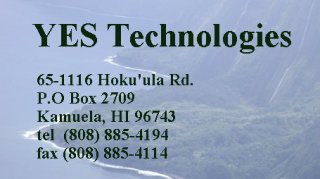
Child-Resistant Safety Belt Buckle
Description:
A combination-lock-like design with an opening mechanism which relies on cognitive skills rather than strength.
Potential Competitive Advantage(s):
Enhanced safety due to reduction in the incidences of unintentional and unauthorized release of safety belt.
Examples of Applications and Markets:
Child-safety furniture.
Status:
DOT Phase I SBIR project completed.
Patents:
Literature Available:
Phase I final report-- Cognitive Skill Based Child-Resistant Safety Belt Buckle Device, (research sponsored by U.S. Department of Transportation), April 1990, pp.89 plus appendices.
Child-Resistant Lighter
Description:
A combination-lock-like design with an opening mechanism which relies on cognitive skills rather than strength.
Potential Competitive Advantage(s):
Enhanced safety. With our technology, both the discharge of gaseous fuel and emission of sparks are controlled. In other systems, only one of the two hazard causing actions is controlled.
Examples of Applications and Markets:
Disposable lighter.
Patents:
Anaerobic Respirometer for Bioremediation Process Design
Description:
This device was developed for the automatic collection and analysis of data to calibrate bioprocess models.
How It Works:
The most productive approach to bioprocess development and design, termed reactor engineering, involves the development and calibration of mathematical bioprocess models.
While current commercial respirometers are geared toward the monitoring and control of aerobic microorganism bioprocesses, YES has designed this innovative technology to assist environmental engineers and managers in monitoring the progress of anaerobic microorganism bioprocesses.
Potential Competitive Advantage(s):
Examples of Applications and Markets:
Cleanup (remediation) of sites contaminated with hazardous wastes (like fuels and solvents) is expected to cost the U.S. economy hundreds of billions of dollars over the next several decades. Researchers seeking cost-reduction breakthroughs have begun investigating the use of promising anaerobic biotechnologies such as denitrification, sulfate reduction, methanogenesis and reductive dechlorination as cost-effective bioremediation options. These options are particularly suited for sites contaminated with gasoline and/or solvents like perchloroethylene (PCE), trichloroethylene (TCE) and their breakdown products.
Patents:
"Apparatus and Method for Anaerobic and Aerobic Respirometry," U.S. Patent Application No. 08/530,539.
Literature Available:
Phase I final report-- Anaerobic Respirometer for Bioremediation Process Design, (research sponsored by U.S. National Aeronautics and Space Administration), May 1995, pp. 77 plus appendices.
Two-Way Pager: Wireless Network for Storm Water Monitoring
Description:
A wireless communication system for unattended environmental monitoring. This system consists of widely-distributed, "smart" monitoring stations linked by digital wireless communication.
How It Works:
Existing technologies used in conventional environmental monitoring systems present problems for accurate and economical measurement and communication. This system uses previously unexploited capabilities of common carrier two-way pager wireless by employing advances in low-energy signal processing and distributed micro-electromechanical systems.
Potential Competitive Advantage(s):
Much of the hazardous and labor-intensive site work now required is eliminated by automated, wireless control and communications. 1) Reduces personnel exposure to traffic and confined entry hazards by eliminating the requirement for manhole entry for routine data collection. 2) Eliminates the need for expensive hardware.
Examples of Applications and Markets:
In a key application, flowmeter stations and at least one rain gauge station are networked through a base station for storm water discharge or infiltration-inflow monitoring. Low-power, license-free wireless two-way pager transceivers are used to transmit radio signals in and out of sewer manholes. This technology is offered for license or outright sale.
Patents:
"Distributed and Unattended Wastewater Monitoring System," U.S. Patent Application No. 08/360,300.
Literature Available:
Environmental Protection Agency Phase I proposal--Wireless Network for Industrial Pretreatment Compliance Monitoring, January 1995.
Double Bubbler: Portable Water Level and Pressure Monitor
Description:
An improvement to a double-bubbler water level sensor invented by researchers in the U.S. Department of Agriculture. This improved device is a compact, manifold-mounted pneumatic integrated circuit which offers greater performance accuracy and reliability than currently available bubbler devices.
How It Works:
The system transmits and senses liquid pressure and level, and records accurate pressure measurement--even under conditions of rapidly varying liquid head. The pressure(s) at the end of one or more bubbler tubes is transmitted to one or more differential pressure sensor(s) having a very linear response to pressure changes. Differential pressure sensors have both a pressure port and a reference port. The differential pressure sensors significantly reduce the required range of the sensors. Typical accuracy is + 2mm of liquid head over a range of 0 to 3 meters of head. Sensors are zeroed before each measurement cycle by simultaneously exposing both sides of each sensor to the same pressure. Sensor spans can be periodically checked and/or recalibrated against a highly accurate differential pressure source incorporated in the device.
Potential Competitive Advantage(s):
Examples of Applications and Markets:
This apparatus is designed for flow metering and liquid density measurement applications. The technology provides an extremely accurate way to measure liquid levels/pressures produced by primary elements like Venturi meters, flumes and weirs.
Patents:
Interactive Wellness Software
Description:
A computer software, expert system which enhances the day-to-day communication between cancer patient, caregiver (family, friends, volunteers), and medical professional (nurse, doctor).
How It Works:
Basic components of the software include: a personal portrait of the patient, health care reminders, health status of the patient, symptoms and side effects, thought collection (questions for my caregiver, diary).
Potential Competitive Advantage(s):
Telemedicine to date has focused on exchange of information between doctors. Support groups have electronic bulletin boards and forums among patients and caregivers on the Internet. The facilitation of an interactive exchange of information between patient, caregivers, and careproviders is unique to this software.
Examples of Applications and Markets:
Can be enhanced to address any health care issue. Anticipated markets through HMO's, rural health care, support organizations.
Status:
Phase I SBIR research completed and a software prototype was developed and alpha tested. A commercial partnership will be necessary to the application for Phase II SBIR funding.
Literature Available:
Phase I final report-- Interactive Wellness Software for Adults with Cancer, (research sponsored by U.S. Department of Health and Human Services), April 1995, pp. 103 plus appendices.